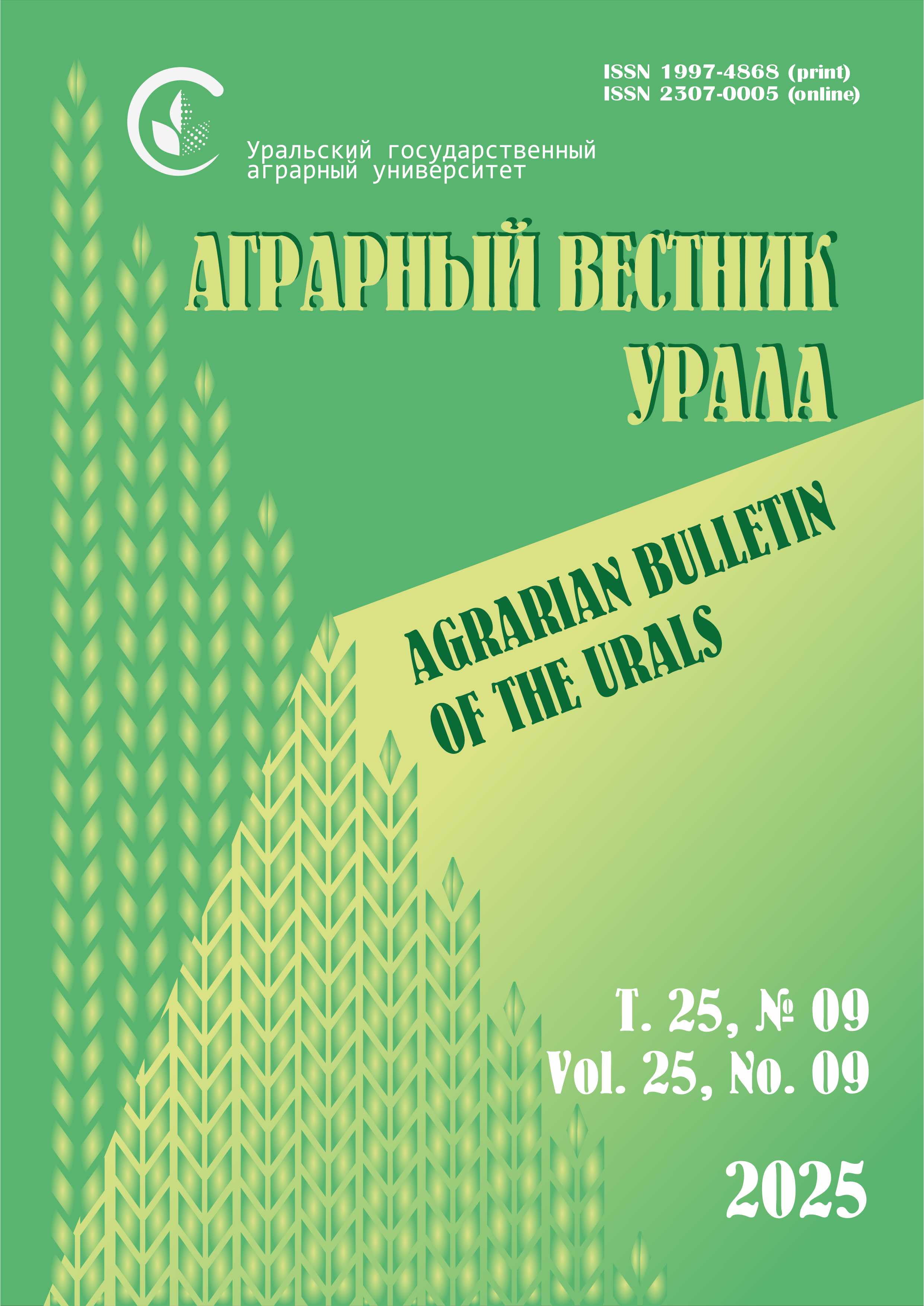N. V. Gaponov
All-Russian Lupine Scientific Research Institute – a branch of the Federal Williams Research Center of Forage Production and Agroecology, Michurinskiy settlement, Bryansk region, Russia
E-mail: This email address is being protected from spambots. You need JavaScript enabled to view it.
Volume 25 No. 8
Date of paper submission: 01.07.2025, date of review: 04.07.2025, date of acceptance: 16.07.2025
Published: 08/31/2025
Abstract. The purpose is to study the effect of yellow lupine without a shell of the Bulat variety, used as a source of vegetable protein in diets, on the digestibility of nutrients, nitrogen balance, biochemical composition of blood and productivity parameters of young pigs. Scientific novelty. This study examines the prospect of using low-alkaloid yellow lupine (Lupinus luteus L.) without a Bulat shell as a full-fledged alternative to soy and high-protein feeds of plant and animal origin in the preparation of diets for young pigs. Research methods. It was found that the inclusion of yellow lupine in the diets of young pigs makes it possible to reduce or replace soy feeds in experimental groups 2, 3 and 4 by 33.3 %, 60 % and 100 %, respectively. Results. The research results confirm that decortication makes it possible to replace high-protein feeds of plant and animal origin with yellow lupine to a greater extent. Experimental data indicate that the highest productivity was observed in young pigs of the experimental groups: in groups 2, 3 and 4, the average daily gains were higher than in the control group by 6.01 %, 10.54 % and 14.7 %, respectively. In the process of studying the cost of feed and nutrients to obtain an increase, it was found that the lowest cost of obtaining a unit of production was observed in the experimental groups. The exchange energy costs in the 2nd experimental group were 6.08 % lower than in the control group, 10.26 % lower in the 3rd experimental group, and 13.76 % lower in the 4th experimental group. A similar pattern is observed in feed costs: in groups 2, 3, and 4, they were 5.67 %, 9.54 %, and 12.82 % lower, respectively. In the balance experiment, it was found that the efficiency of nitrogen assimilation was maximal in experimental animals when calculating the amount of feed taken: in the 2nd experimental group – by 4.20 % higher, in the 3rd group – by 6.10 %, and in the 4th – by 8.21 %. Nitrogen absorption from digested feed was 3.65 % in the 2nd experimental group, 5.32 % in the 3rd, and 7.03 % in the 4th, respectively. The coefficients of digestibility of crude protein were higher in the experimental groups (groups 2, 3 and 4) by 2.2 %, 3.1 % and 4.21 %.
Keywords: yellow lupine, conversion, retention, excretion, nitrogen balance, biomarker, aminotransferase
For citation: Gaponov N. V. Metabolism and productivity of young pigs when using yellow lupine in the diet. Agrarian Bulletin of the Urals. 2025; 25 (08): 1209‒1221. https://doi.org/10.32417/1997-4868-2025-25-08-1209-1221 (In Russ.)
Download the full text of the article












